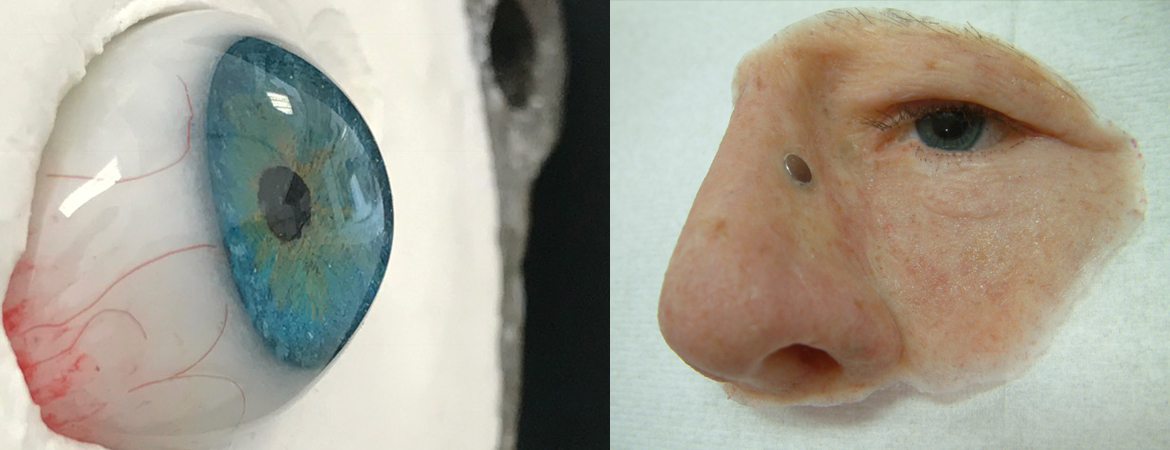
Prosthesis:
- is an artificial replacement for a missing part of the body.
This can be for a missing part such as an ear, nose or an eye. It can also be used to describe replacing missing bone or muscle under the skin (an implant).
The prosthesis is used to try to copy or mimic the part that is missing.
The reason the skin or bone is missing can be due to accidents (trauma), cancers or infections (surgically removed) and people born without the part (congenital).
The term is sometimes used further to define a specific region of the body that the prosthesis is made for such as a ‘facial prosthesis’. Facial prostheses usually encompass the ears, nose, cheeks and lips and the area including the eye and eyelids. If the eye and the eyelids have been removed this is usually called an ‘orbital prosthesis’. If the eyeball has been removed and the eyelids are still in place the prosthesis to replace the eyeball is called an ocular or ‘indwelling’ eye prosthesis.
Body prostheses, sometimes called ‘Somato’ prostheses, usually include everything else apart from the face. This could be the breast, the hands or fingers and also missing skin on the legs or arm.
What are they made from?
This really depends on where the site of the defect is. If is it is a skin defect then it will usually be made of a soft material called silicone. This is a very skin like material that is soft to touch and can be coloured to match the surrounding skin.
Eye prostheses are made from a material called acrylic (plastic). They are hard and can be highly polished to copy the other eye.
If the prosthesis is an implant to replace bone or muscle and skin it can be made from a silicone (soft for muscle or skin) or a metal such as Titanium (to replace bone).



